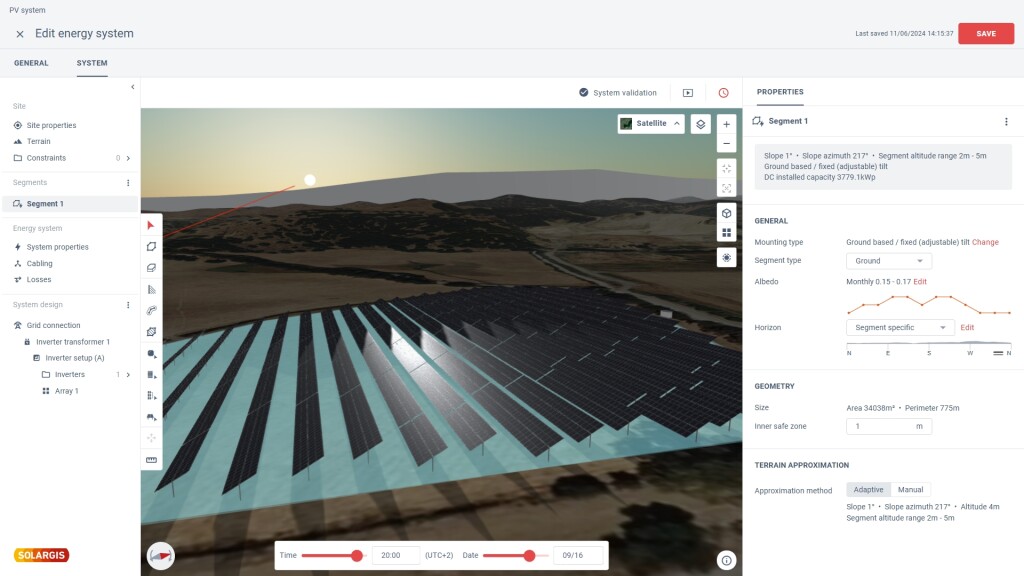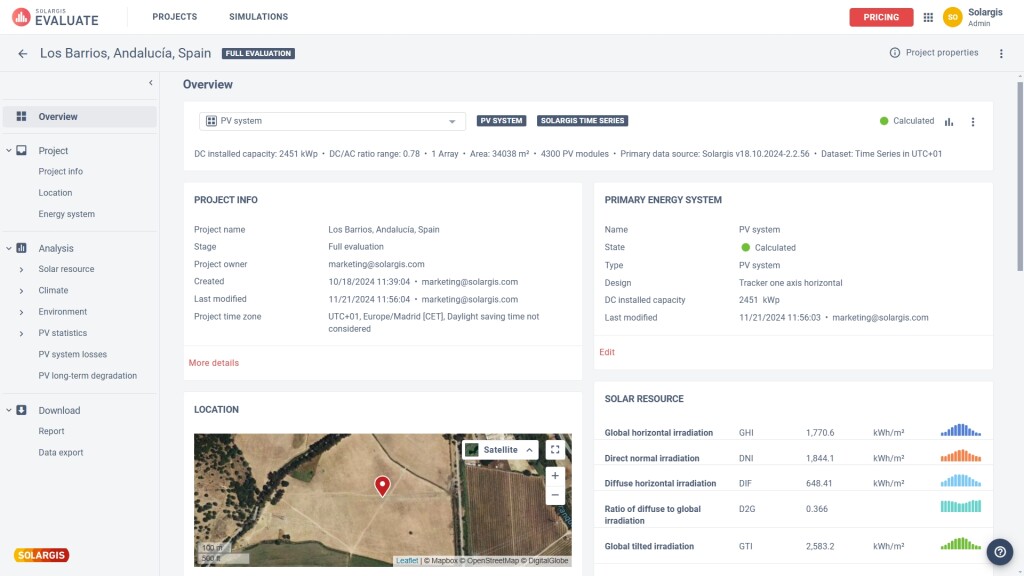Esta página aún no está traducida al español. Puede verla sólo en inglés.
The solar energy market is filled with specialized tools for various stages of project development, from site selection and PV design to performance simulations and analysis. Despite the inefficiencies, substantial costs, and inconveniences of managing multiple applications and subscriptions for PV project evaluations, developers have long accepted this as the norm.
To illustrate this, the feasibility phase of PV project development requires many tasks to handle:
Dealing with multiple applications and subscriptions to manage all of these tasks is a major challenge for developers.
First, maintaining multiple tools is costly. Beyond the financial burden, identifying the right applications for each task, integrating them into complex workflows, and managing multiple subscriptions is time-consuming and inefficient. There's also the need of transferring files between platforms, which makes it difficult to organize and access data seamlessly across workflows and teams.
In addition, the efficiency in industry is hampered by legacy data and silo software approaches that create room for evidence-lacking argumentation, false beliefs, and endless disputes, diverting attention from important topics. Many issues from the past have been already resolved by expert companies. The industry should be focusing on validated data-driven decisions to ensure healthy growth of projects, predictable performance and mitigating weather-related risks.
New generation Solargis Evaluate addresses all phases of solar project evaluation, up to due diligence, for developers, EPCs, technology suppliers, investors, and technical advisors.

A leading principle was to carefully choose and implement the best available and practical science, assembling blocks of data, algorithms and technology into one system, to ensure maximum accuracy, performance, reliability and acceptance at any location, worldwide.
Solargis Evaluate 2.0 offers a high level of transparency and trust to stakeholders, built on the principle that all data and models can be validated by real world measurements or independent approaches.
By integrating multiple functionalities, Solargis Evaluate 2.0 provides everything needed from start to finish, including solar, meteorological and environmental data, PV design, PV component data, accurate yield simulations, and analytical reports.
This eliminates the inefficiencies and offers a suite for assessing site suitability and evaluating options for an optimum design and performance. As a web-based platform, Solargis Evaluate 2.0 ensures that all projects are securely saved and backed up in the cloud.

Solargis Evaluate 2.0 is also the first solution of its kind to leverage 15-minute Time Series data, as a base case, spanning up to a 30-year historical period. This enables high-resolution simulations that account for both typical and extreme weather scenarios, considering also solar resource variability. While other tools rely on less accurate TMY (Typical Meteorological Year) data, Solargis Evaluate 2.0 integrates sub-hourly time series data, delivering more accurate energy yield predictions.
Drawing on 15 years of expertise in satellite-model solar data and photovoltaic yield simulation, Solargis Evaluate 2.0 arms the solar industry professionals with the most trusted datasets to ensure optimum PV power plant design and sustainable energy delivery. The new Evaluate covers everything you need to complete evaluation of your PV project – all in one place.
Sign up for our newsletter below and be the first to find out more about the new Solargis Evaluate.